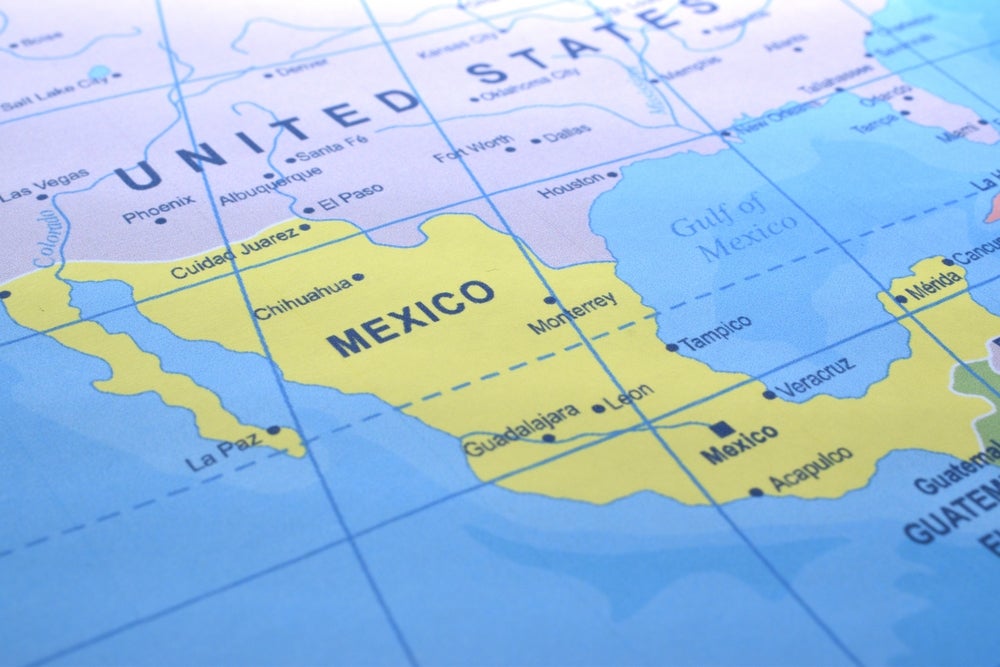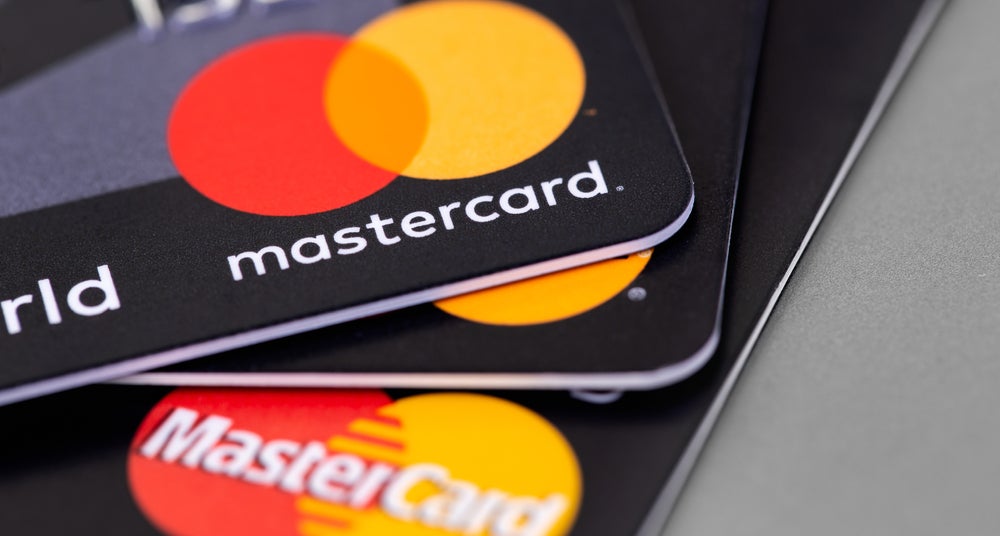In this month’s guest article, Paul
Bartholomew-Keen, business leader of Prepaid Europe at
MasterCard, outlines how the flexibility of prepaid payment
solutions widens their appeal to segments not traditionally viewed
as target markets, and how prepaid stakeholders need to take a
long-term view to ensure success.
With the global financial community scrambling to avoid further
meltdown amid the demise of several famous financial institutions,
it is somewhat refreshing to be able to reflect, closer to home, on
the continued successful growth of the prepaid industry in the UK
and across Europe.
The prepaid growth explosion has of course been well documented
in the pages of this publication, fuelled to no small degree by the
flourishing travel, gaming and payroll market segments.
Some observers maintain that this growth has taken longer than
was predicted three years ago, but there is widespread consensus in
our industry that the overall trend is an upward one.
Despite this rosy backdrop, however, my personal experience
suggests that several barriers, real or perceived, still need to be
negotiated successfully as the prepaid industry seeks to enjoy
continued growth and expansion into the mass marketplace.
Foremost among these is the need to make prepaid cards appealing
to consumers who sit well outside the traditional market
demographic. The value of prepaid cards to low-earning workers,
benefit recipients and economic migrants with little or no credit
history to speak of is generally understood and acknowledged.
How well do you really know your competitors?
Access the most comprehensive Company Profiles on the market, powered by GlobalData. Save hours of research. Gain competitive edge.

Thank you!
Your download email will arrive shortly
Not ready to buy yet? Download a free sample
We are confident about the unique quality of our Company Profiles. However, we want you to make the most beneficial decision for your business, so we offer a free sample that you can download by submitting the below form
By GlobalDataAny objective assessment of the market opportunity here surely
has to conclude, however, that these remain a collection of niche
markets which, when joined together, will likely not be powerful or
lucrative enough to ensure sustained long-term growth for
prepaid.
In this article, I’ll be taking a look at the major challenge
associated with promoting prepaid to professional and likely
wealthier consumer communities, and gathering examples from around
the prepaid industry on just how far down the road prepaid has
journeyed thus far in terms of addressing and resolving this
particular issue.
Practising what we preach
It’s a fair wager than many Cards International
readers, themselves passionate advocates of prepaid cards as
revenue generators in the niche markets listed above, have found
themselves shifting uncomfortably in their seats when asked by
existing and prospective clients whether they actually have a
prepaid card in their own wallet.
Having said that, it also feels quite safe to suggest that many
clients themselves would feel like heading for the meeting room
exit were the question to be turned 180 degrees back in their
direction.
While this assessment might sound flippant, it isn’t intended to
be so and it also bears more than a grain of truth. For many
well-paid professionals, both inside and outside the immediate card
payments community, prepaid is regarded as what might be described
as a ‘nice little earner’ but is something which, at the same time,
is not ultimately for them.
The historical context
History plays a major part in this scenario. Prepaid’s roots
stem from the US, where the traditional focus and purpose of
prepaid payment cards has evolved from an initial sole focus on
gifting to encompass the use of prepaid to serve such subprime
purposes as social welfare payments, so-called basic bank accounts
and economic migrants.
This focus has been reflected, not insignificantly, in the UK
and Europe and has helped to bring about innovative and successful
programmes including the White Eagle Maestro prepaid card, as well
as such services as the cashplus Credit Builder, the brainchild of
Advanced Payment Solutions (APS), a specialist prepaid company.
Meanwhile, the wider role of international remittance payments
as a driver of prepaid growth cannot be underestimated. This again
feeds on the largely subprime economic migrant market and the
growing volume of monies being sent via prepaid cards from
countries across Western Europe to destinations as diverse as
Turkey, Romania, North Africa, Latin America and the Caribbean.
With the global population becoming evermore mobile, it is likely
that these volumes of prepaid card-based payments will continue to
increase.
Europe’s unique growth route
It has become increasingly evident, however, that the continued
development of prepaid in the UK and Europe is set on a path of
greater diversification than that of our American colleagues.
This year alone has hailed increased interest in prepaid from
big banks and telecommunications companies, as well as high street
retail giants including Tesco, which recently launched its own
online currency prepaid card.
Meanwhile, fans of Manchester City Football Club, recently
buoyed by the Abu Dhabi Group takeover, have been among those
consumers experiencing first-hand the power of prepaid when
combined with contactless technologies.
This use of a reloadable MasterCard prepaid with PayPass
contactless card has enabled more than 3,500 season ticket holders,
from a wide range of backgrounds, to enter the City of Manchester
Stadium and pay for match day purchases of under £10 simply by
using ‘Tap&Go’ as their means of payment.
This is, of course, just one example of the application of
innovative thinking on the part of those responsible for growing
the popularity of prepaid. August this year saw M-Cube Media
announce its decision to waive all purchase and delivery fees for
UK customers choosing its Aspinall Foundation Maestro prepaid
card.
This coincided with a decision by the company to donate all
profits from transactions made by cardholders using the card to the
wildlife charity. This move may, in future, be reflected upon as a
key milestone in the development of the prepaid industry by a
company which regards the provision of prepaid cards for free at
the POS as a key piece in the industry’s growth jigsaw.
Joining the dots
Against this background, it would be unjust to suggest that the
drive to welcome the wealthier, professional classes into the
prepaid fold is entirely devoid of momentum. However, it is also
difficult to resist the temptation to suggest that the examples
cited above are simply islands of excellence which satisfy singular
or niche uses for the wealthier echelons of society.
The key, therefore, is for the industry to identify means by
which prepaid can be positioned successfully as a holistic payments
solution, with universal consumer appeal. This may in turn enable
prepaid to sit alongside credit and debit payment cards as a fully
integrated part of everyday consumer life, as well as ensuring that
it is no longer regarded as either an afterthought or a poor
relation by the payments industry itself.
This leads neatly to the suggestion that payment cards combining
prepaid with debit and or credit solutions might provide the
answer. This concept is not new, with multi-function (credit and
debit card) propositions having been trialled in the United States
as long as a decade ago.
In Europe, meanwhile, MasterCard has already launched Europe’s
first combined debit, credit and retailer loyalty card programme,
the product of a partnership between pan-Nordic financial group
Nordea and Finnish department store chain Stockmann Oyj Abp.
This has been followed quickly by the launch of Europe’s first
combined debit and credit chip card in partnership with Crédit
Agricole and AsyaCard DIT, which offers combined credit and
MasterCard PayPass contactless payments and an integrated municipal
toll and transit application to customers of Bank Asya in
Turkey.
For some, this combined prepaid, debit and credit card is the
ultimate product; offering consumers the convenience and
flexibility of determining their preferred method of payment
directly at the POS. Customers seeking to assign specific pots of
money for particular purposes could, as part of a budgeting
process, transfer monies from their current account, served by the
debit card feature, to their prepaid account, all using only one
card.
The barriers to success are high, however, not least because of
the enormous investment which would be required and the inevitable
involvement of the large retail banks, with the accompanying ceding
of control this would bring for the existing major players in the
prepaid community.
A perhaps more compelling argument against this solution,
however, is its failure to acknowledge that like it or not, prepaid
is a separate product, which, while it remains unattached to any
other retail banking offering, will always sit uncomfortably
alongside its more established debit and credit cousins.
It also fails to address convincingly the point that more
affluent consumers, accustomed to a diet of credit and debit, would
need to be persuaded that the addition of a prepaid application to
their existing payment card would be something worthy of them
changing their payment habits.
In the event that an industry player is able to crack this
particular conundrum, they would quite possibly have a mass-market
leading product on their hands. For the moment, however, this
seemingly remains a distant prospect.
Co-branding for success
What emerges from this issue, therefore, is what feels like a
search for the true meaning and purpose of the prepaid application
for the wider market and in particular the professional
classes.
Co-branding is one means by which the prepaid industry has
already moved in an attempt to achieve this. Once again, this
approach isn’t unique, with mobile phone providers, particularly in
the United States, having for many years pursued tie-ups with
consumer brands for their prepaid offerings, – with varying degrees
of success.
However, the perennial challenge of demonstrating what prepaid
payment cards add in terms of value for consumers of any given
brand remains. Building the correct rewards and incentives package
is therefore essential, as is partnering in the first place with a
brand which is unlikely to alienate large swathes of consumers.
This obstacle has been tackled in the United States with the
proliferation of ‘mall cards’ which involve the capitalisation by
prepaid programme providers on the strength of consumers’ loyalty
to particular shopping environments as opposed to, in this case,
specific retail brands.
It has been successful in the UK too, with major shopping plazas
including Birmingham’s Bull Ring and Manchester’s Trafford Centre
both having introduced their own branded prepaid gift cards.
Moving away from a sole payments focus
This successful focus on existing consumer interests and
loyalties lends weight to a mindset, increasingly widespread in
prepaid industry circles, that the key to achieving mass product
appeal is to position prepaid payment cards as being a key with
which consumers can access a range of non-financial benefits,
rather than simply being a convenient payment mechanism.
This represents a significant shift in traditional payments
industry thinking but one which certainly holds water. It suggests
that while prepaid card usage is an inherently limited market in
itself, by providing a range of benefits and incentives available
only through ownership and regular usage of the card, industry
players can access a wider marketplace. The card itself acts as a
financial passport.
M-Cube Media once again provides a neat example of this
thinking. The company’s On-X Maestro prepaid card offers users
access to a range of offers and discounts from leisure and retail
companies; an approach which is naturally likely to appeal to a
wide range of consumers, including professionals, who just like
anyone else enjoy the feeling of having secured what they regard to
be a bargain. The outcome is a ‘club’ mentality, where members feel
bonded together by possession of the prepaid payment product.
Education, education, education
Reflecting on these developments, there are clearly plenty of
reasons for the industry to be cheerful about the prospect of the
barriers to broadening the appeal of prepaid to be perceived as
opposed to real. This leads me to think that perhaps the real
challenge facing the prepaid community, as well as the wider
payments and financial services industry is, in fact, primarily an
educative issue.
In this respect, prepaid operates on strong foundations. Thanks
to the success of mobile phones, the concept of prepaid is well
understood by the public, many of whom are being tempted to return
to this method of mobile phone ownership as lengthy contract deals
become increasingly unappetising in these troubled economic
times.
This isn’t a trend limited to the less wealthy members of
society, as the prospect of a recessionary downturn harbours the
potential to adversely impact consumers at every economic
level.
Those among us seeking to educate the wider populace about
prepaid should also take heart from the fact that as a proposition,
it is after all very simple. It is also very upfront and
transparent with a very clear purpose.
All that consumers need, therefore, are clear reasons to buy and
use the product. With regard to the latter, reward and incentive
schemes are clearly the key. To win the initial buy-in however, the
entire payments industry, including organisations such as
MasterCard, must unite to constantly reunite the generic benefits
of prepaid payment products.
This also applies to targeting professionals in the context of
their working lives. As I’m told with increasing regularity by
senior players in the prepaid community, the adoption of prepaid
cards for the purposes of business expenses uses is becoming
increasingly popular among owner-managed businesses.
Besides providing a valuable additional revenue stream for
issuers and programme managers, this provides yet another
opportunity to encourage more affluent members of the community to
regard prepaid as a normal and acceptable part of everyday
life.
Take the long view
In my view, a long-term approach is essential here. The key is
not just to focus on the wealthy consumer of today, many of whom
may be too set in their ways to embrace the concept of prepaid over
credit and debit, but instead to ensure consistent and clear
communication with the younger generations, who will generate and
retain the wealth of decades to come.
Parents of teenagers must be made aware that prepaid offers a
convenient, safe and responsible means of managing their children’s
spending. In turn, they will advocate the benefits to their
youngsters, who will increasingly see prepaid as a component in
everyday life as it becomes commonplace in such environments as
sports stadiums and public transport networks.
From a UK perspective, the transport network opportunity is
definitely one to watch. Transport for London (TfL) recently gave
notice to its Oyster card platform and IT provider, TranSys.
This decision brings with it the potential for the current
closed-loop infrastructure to be replaced by an open-loop
multifunction system, similar to that being used already at the
City of Manchester Stadium. With Oyster already boasting in excess
of 6 million users, this is a tantalising prospect for the prepaid
community.
This all demands a sensitive approach to marketing and a
commitment to ensuring cards are used for appropriate purposes
only, but it is in my opinion eminently achievable.
Conclusion: niche is good
At a glance it is easy to adopt the sceptical view that the
weight of history will forever confine the prepaid market to limits
imposed by its subprime roots. It is also straightforward to assume
that niche and mass market successes are, by their very definition,
mutually exclusive.
The first standpoint, I believe, is easily dismissed. That
prepaid is at the forefront of payments industry thinking when it
comes to the trialling of, for example, contactless technologies,
can only bode well for the future.
Likewise, the collective weight of product development and
marketing expertise now possessed by specialist prepaid companies
is immense, making it hard to believe that, in five years time,
co-branding and affinity club strategies will stand as the final
stage in the evolution of the marketplace.
Some prepaid industry figures believe a big push into the
prepaid market by a big high street bank could potentially play a
major role in the ‘massification’ of prepaid. Amid the current
economic scenario, major banks are facing growing pressure to
diversify their product portfolios while not overstretching
themselves in terms of consumer lending. In this case, ‘pay for’
prepaid solutions may hold a valuable key.
Big bank interest could, however, spell bad news for the future
viability of some prepaid companies in what is, after all, an
already crowded marketplace. It is also unlikely to happen
overnight.
The issue of niche and mass-market mutual exclusivity,
meanwhile, seems likely to hold the key to future development. For
a start, the industry needs to see the niche value of prepaid as a
source of opportunity in itself.
That prepaid is a niche product with niche applications is
inescapable. However, if prepaid businesses can continue to prove
themselves flexible and innovative enough to consistently find
means of forging relationships with consumers, following on from
such successes as mall cards and leisure time brand associations,
then the aggregate value of these supposed niches will become
increasingly large.
As a result, the range of consumer backgrounds being swept along
by this prepaid tide will likely continue to broaden, meaning that
I for one will feel significantly less reluctant to raise the
prospect of prepaid card ownership as I go about my everyday
business.







